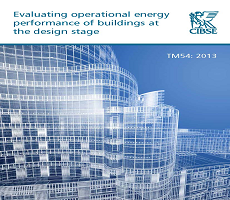August 28, 2013
New guidance for designers on bridging energy performance gap

So-called “low energy buildings” are increasingly being found to use more energy than their designers thought they would, with the performance of low energy designs often little better, and sometimes worse, than that of an older building they have replaced, or supplemented. This difference between expected and realised energy performance has come to be known as the “performance gap”. To help address this problem, the Chartered Institution of Building Services Engineers (CIBSE) has just issued new guidance on how to address operational energy use at the design stage. ‘TM54: Evaluating operational energy performance of buildings at the design stage’ is now available from the online CIBSE Knowledge Portal.
David Cheshire, Lead Author, Regional Director of Sustainability, AECOM said: “The aim of the guidance is to enable designers to make better estimates of operational energy, identify the range of possible outcomes and therefore show how designs can be improved to deliver on the predictions.”
According to CIBSE there are two main reasons for the performance gap. The first is that the method of calculating energy use for the purposes of compliance does not take into account all the energy uses in a building. In particular, it does not address energy used by lifts and escalators, for catering facilities, or for server rooms. This energy use can be substantial: in one case study, the National Trust HQ at Swindon, it was found that 60 per cent of the energy use, that for the server room and the catering, was used in just 3 per cent of the floor area, and more than doubled the operational energy use over the design estimates.
The second reason for the performance gap is related to site practice. To deliver a building that uses as much energy as expected requires that the design is built as intended, the engineering systems are commissioned effectively and the operators and occupiers of the building understand how to operate and maintain the building so that it delivers the expected performance.
This Technical Memorandum (TM) addresses the first reason. It provides building designers and owners with clear guidance on how to evaluate operational energy use more fully, and accurately, at the design stage. After a brief introduction, which explains the need for the guidance in more detail, it explains the importance of making an accurate estimate of the operating hours and likely occupancy of the building. It then sets out how the operational energy required for the building can be estimated.
In each case, it provides guidance on how to make more accurate estimates based on the intended use and operation of the building. As well as enabling the designer to estimate energy use more accurately, it will highlight any areas where actual energy use may be higher than a typical building, allowing this to be considered at the design stage.
CIBSE guidance is available free of charge to its members, or can be ordered by non-members, via the CIBSE Knowledge Portal













